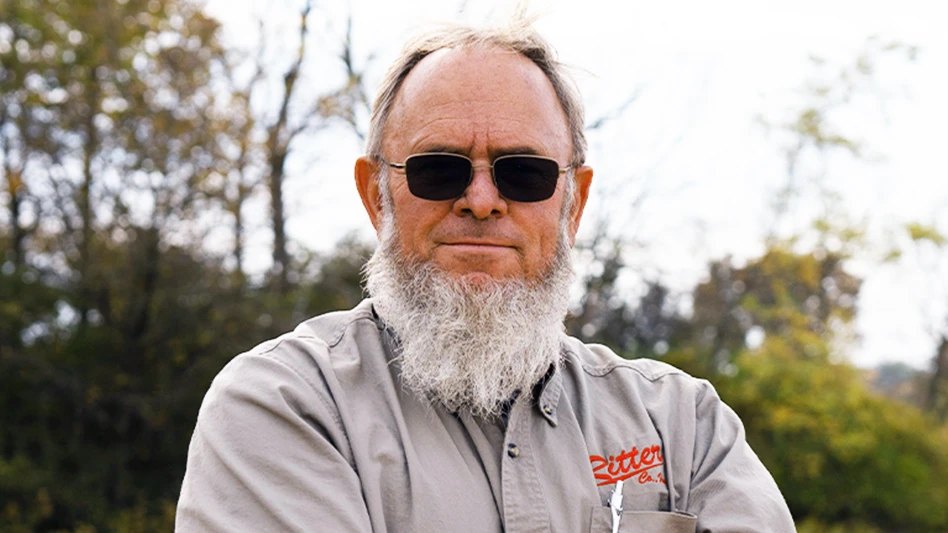
The U.S. Environmental Protection Agency (EPA) and the California Department of Toxic Substances Control (DTSC) say they have cleared household hazardous waste from more than 99 percent of properties in the town of Paradise and Butte County as part of the Camp Fire cleanup effort.
The remaining properties will be cleared of household hazardous waste by DTSC during the second phase of the cleanup process, according to a press release from the EPA.
“EPA’s strong partnership with the state of California, Butte County and local officials helped expedite this critical first phase of the Camp Fire recovery,” says Mike Stoker, EPA’s regional administrator for the Pacific Southwest region. “We are honored to have contributed to these efforts and hope the community can move toward the next phase in the cleanup process.”
The second phase consists of five steps: site assessment and documentation; debris removal; confirmation sampling; erosion control measures; and final inspection.
Over the next year, crews will work six days a week on phase two to clear more than 15,000 properties destroyed in the Camp, Woolsey, and Hill fires as part of the largest disaster debris removal operation in modern California history, says the California Department of Resources Recycling and Recovery (CalRecycle) in a press release.
Under the leadership of the Governor’s Office of Emergency Services and local governments, the cleanup is a joint effort between CalRecycle; Butte, Los Angeles and Ventura counties; DTSC and the EPA; the Federal Emergency Management Agency; and other federal, state and local partners.
Currently, 78 debris removal crews consisting of 3 to 5 persons each, as well as 17 teams conducting vehicle tagging, chimney tipping, and asbestos abatement, are working to clear properties and put wildfire survivors in a position to rebuild, CalRecycle says. Additional crews will added in phases as determined by incident management teams in Butte, Los Angeles, and Ventura counties.
“California once again demonstrated that our collective resources and resolve can meet the challenges posed by unprecedented wildfire activity,” says Meredith Williams, the acting DTSC director. “To have completed the cleanup of thousands of homes and businesses impacted by the state’s wildfires in under nine weeks is a significant accomplishment and speaks to the strength of our partnerships and our commitment to the safety of the survivors of these devastating fires.”
“In the face of the most destructive wildfires in California history, local, state and federal partners mobilized in a swift response to stabilize the situation and begin the recovery process. Collaboration between the EPA and DTSC is a prime example. Tireless work over the past two months led to the completion of phase one ahead of schedule,” says David Samaniego, FEMA’s federal coordinating officer. “We will continue to present a united front and support survivors every step of the way.”
“The completion of Phase I recovery operations ahead of the estimated timeline is a testament to our multiagency coordinated efforts,” says Mark Ghilarducci, the director of the California Governor’s Office of Emergency Services. “Together, we have successfully supported survivors and will continue that support throughout the Recovery process.”
During the first phase of cleanup, which began on Dec. 3, 2018, EPA and DTSC cleanup crews assessed and removed household hazardous waste from over 13,000 fire-damaged properties. These wastes included paint, solvents, pesticides, fuel, batteries and other combustible items.
CalRecycle has begin removing solid waste, debris and ash in the affected areas for the second phase of cleanup. Property owners needed to sign right-of-entry forms to participate in the second phase. So far, CalRecycle says it's received nearly 12,000 forms so far.
Approximately 50 properties were marked “no access,” meaning crews could not enter the property due to a locked gate or fence, a property owner who denied access, dangerous trees or terrain, unstable structures or other unsafe conditions. DTSC says will continue to work in the town of Paradise and Butte County on those properties.
Although the majority of household hazardous waste has been removed during the first phase, some items may remain and will be removed in the second phase. Ash and other materials should not be disturbed.
Those who have questions about household hazardous waste removal or the second phase of the cleanup should contact the State of California’s Debris Removal Operations Center at 530-399-0434. EPA’s hotline is no longer operational.
For additional information on the Camp Fire response and recovery, visit https://buttecountyrecovers.org/. For the Phase 1 progress map, visit https://buttecountyrecovers.org/phase1status/.
Latest from Construction & Demolition Recycling
- NWRA, SWANA to partner on safety, education and advocacy
- ABC: Nonresidential construction adds jobs in April despite headwinds
- Demolition underway at former South Carolina steel mill
- Turkey neglects US scrap in favor of Russian shipments
- Results of New Hampshire waste study reveal missed opportunities for diversion
- Alterra, Eco Materials open soil remediation facility in PA
- Steelmakers’ Q1 results largely profitable
- LS3600TX Low Speed Shredder enables efficient recycling





